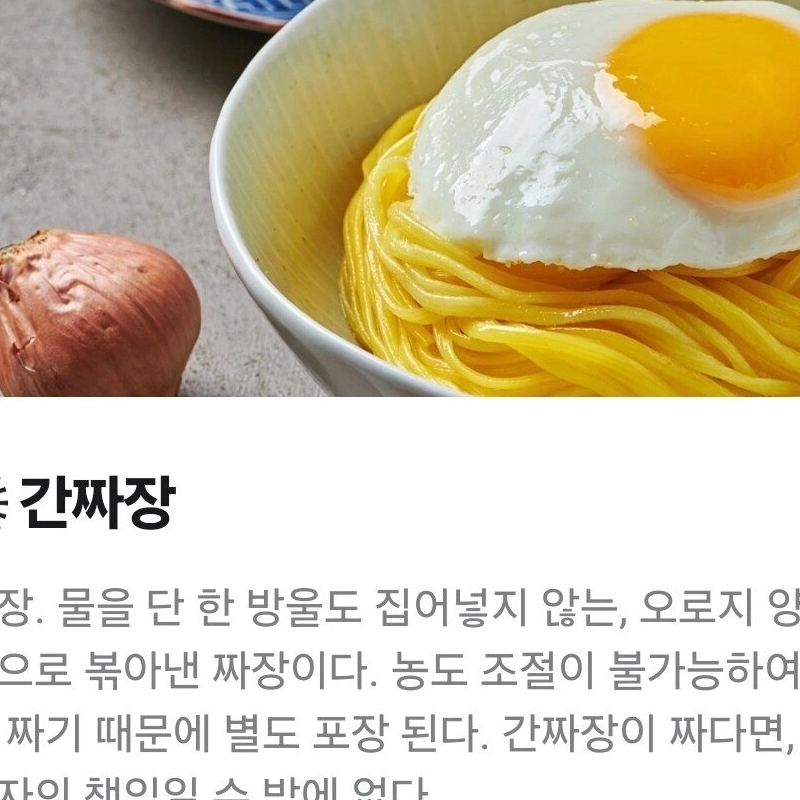
Jjajang is made by diluting soybean paste with water.
Kkooook!!! 1 in 100 people find their soybean paste too salty!
I do it. If you go and see how those people ate, you will find that most of the time, they have poured all the soybean paste sauce they give them.
The real Ganjjajang you all want. The more soy sauce is stir-fried and served immediately, the more salty it tastes.
Since the onion is not dead, the onion juice is inside the onion, so the outside is actually 100% thick chunjang.
It’s really salty!!!
So, don’t pour all of the soy sauce, pour in about half of it, then add little by little and mix it in between meals.
If you follow this carefully, wherever you go and no matter who cooks it for you, you will be able to eat it to your taste without it being too salty.
Sometimes, some people say that the reason they serve soy sauce separately is to avoid confusing it with jjajang.
That’s completely wrong. In that case, how did you distinguish between Samseon Jjamppong and regular Jjamppong?!?!?!?! They don’t even differentiate??
Please…please please.
Please look at the liver and eat it.
If you’re complaining to our store, we can explain it to you, but I wrote this because I feel sorry for people who always eat delicious food that tastes bad and gets upset.
Even if you eat it at another restaurant, enjoy it.
